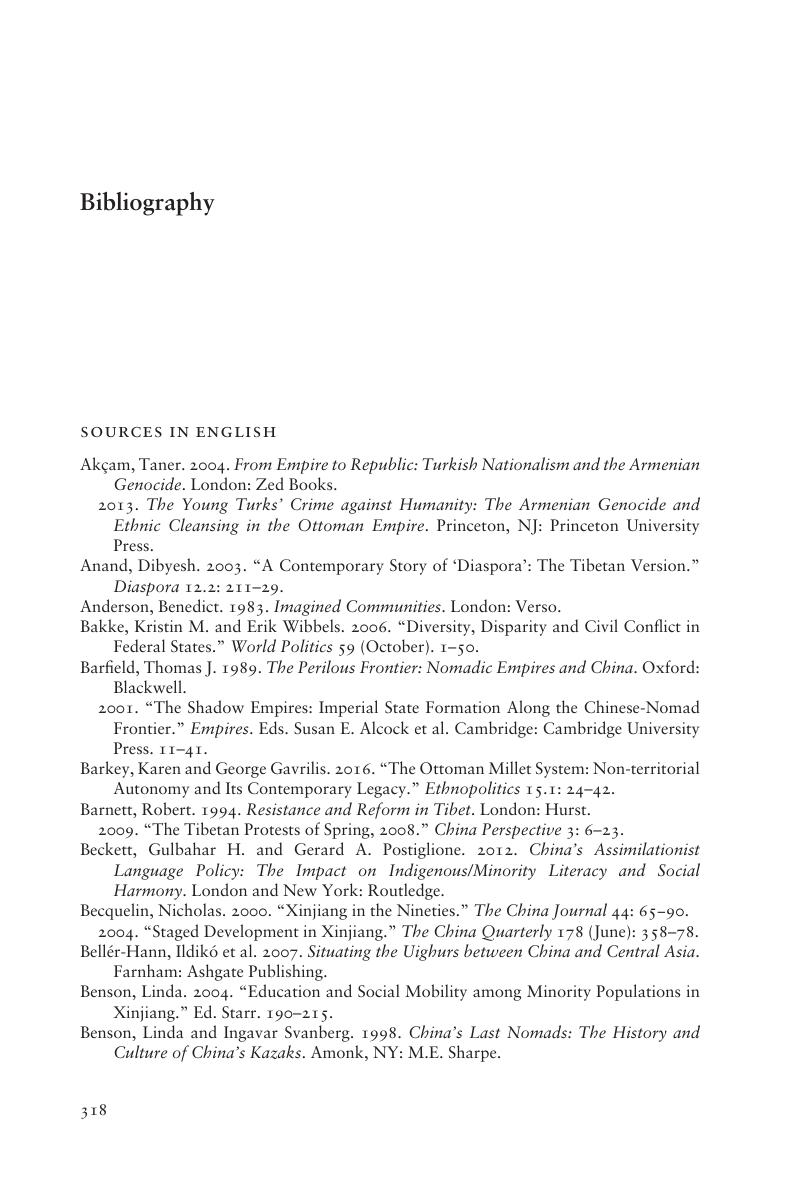Book contents
- From Empire to Nation State
- From Empire to Nation State
- Copyright page
- Dedication
- Contents
- Figures and Tables
- Acknowledgments
- Introduction What Is Destabilizing about China’s Ethnic Regions?
- 1 Changing Approaches to Identity
- 2 Changing Approaches to Ethnic Governance
- 3 Changing Approaches to Policy Instruments
- 4 The Rise of Identity Politics in Post-Mao China
- 5 Ethnic Autonomy and Its Discontents
- 6 Religious Revival and Its Discontents
- 7 Economic Modernization and Its Discontents
- 8 Educational Expansion and Its Discontents
- Conclusion From Empire to Nation State: Lessons and Reforms
- Bibliography
- Index
- References
Bibliography
Published online by Cambridge University Press: 07 September 2020
- From Empire to Nation State
- From Empire to Nation State
- Copyright page
- Dedication
- Contents
- Figures and Tables
- Acknowledgments
- Introduction What Is Destabilizing about China’s Ethnic Regions?
- 1 Changing Approaches to Identity
- 2 Changing Approaches to Ethnic Governance
- 3 Changing Approaches to Policy Instruments
- 4 The Rise of Identity Politics in Post-Mao China
- 5 Ethnic Autonomy and Its Discontents
- 6 Religious Revival and Its Discontents
- 7 Economic Modernization and Its Discontents
- 8 Educational Expansion and Its Discontents
- Conclusion From Empire to Nation State: Lessons and Reforms
- Bibliography
- Index
- References
Summary

- Type
- Chapter
- Information
- From Empire to Nation StateEthnic Politics in China, pp. 318 - 351Publisher: Cambridge University PressPrint publication year: 2020



